A Day in the Life of Acoustic Revive’s Ken Ishiguro
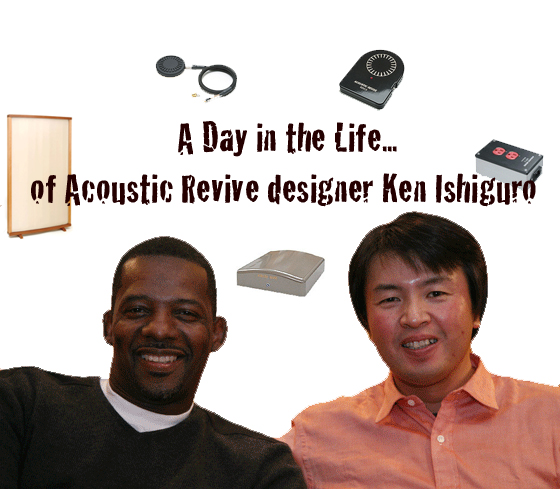
With the recent rave reviews reported here, along with accolades from various staff writers (see our Most Wanted Components listing), it comes as no surprise that Acoustic Revive (AR) products are making quite a splash. Never – in close to one decade of publishing – have so many of our writers agreed so favorably and wholeheartedly on a single designer and his products. So much so, I proposed a visit to Japan to personally sit down and break Sushi with Ken Ishiguro, AR’s designer. Ishiguro thought the idea of meeting face to face and getting a first-hand look of how his products are designed and manufactured was long over due since no one from the U.S. had paid much attention in the ten years AR has been in operation. Almost immediately, Ishiguro booked me on a 14-hour direct flight to Tokyo, Japan.
There was one major glitch. My flight was scheduled to take off on Monday Nov 3rd, one day before our highly anticipated presidential election. And as you know, this wasn’t just any election but perhaps the most important one in our nations history (and most certainly in African American history).

When I looked at my electronic itinerary, I immediately notified AR’s rep and front man Aki Monobe (who’s English is quite good) informing him of this huge mishap. In my emails, I explained that I would like to arrive on Tuesday, Nov 4th if possible. Well, that’s exactly what Monobe did, considering the time difference. It is 14 hours later in Japan while the flight to Tokyo is an additional 14 hours. According to Monobe’s math and flight schedule, if I left on Monday at 10:00 in the morning, I should get there Tuesday by 2:00PM. [Long story short: When I got the news that Barack Obama won the presidential election Tuesday night, it was already Wednesday afternoon and I was situated about 100 miles north of Tokyo, in some secluded mountain-side resort that closer resembled a bungalow, located along the Gunma Prefecture of Isesaki, Japan. To boot, I was being entertained by two Buddhist Monks who just so happened to be true audiophiles and close friends of Ken Ishiguro. For obvious reasons, this was one election I’ll never forget!
Upon my arrival at Narita Airport, I was pleasantly greeted by Aki Monobe (photo right) who then drove me an additional three hours to the home of Ken Ishiguro, down-town Isesaki, Japan. Yep, that’s right, 17 hours just to meet with Ken Ishiguro (and to think, I’ve flown 24 hours to Singapore for an audio show back in 2000). Who said we wouldn’t go to the ends of the earth to get you a good story? Weather was a rather balmy 68 degrees once I made it outdoors.

Meeting Ishiguro (above right) was certainly a pleasant surprise considering I had no idea how old he was or what type of person I was going to meet. Much to my surprise, Ishiguro’s a young and spirited 44 years of age while Aki Monobe is even younger at 26. Very seldom if ever, have I been surrounded by audiophiles and had been considered the elder statesman. Trust me, I too was surprised Ishiguro was this young and talented. In fact, more talented than I had already given him credit for…


Here’s why. Ishiguro’s listening room is perhaps the most elegant I’ve been in. The room’s strikingly rich maple-wood finishes included the Finite Element Pagode isolation racks which appeared to come from the floor and raise all the way up to the in-wall acoustic paneling located throughout, including the ceiling. Absolutely stunning. Ishiguro designed the room himself. Go figure!

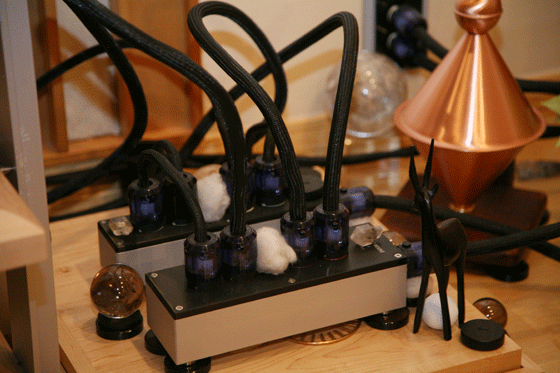
Of course, you already knew without my having to mention, all cabling, AC cords, AC conditioning and tweaks were made by Ishiguro at his Acoustic Revive facility (see my next article). I did not ask what the little crystal balls did to the sound. I was ashamed to ask fearing Ishiguro would tell me they too impact on sound quality and/or AC noise. [Yes, even I have a limit to some tweaks and still can’t fully grasp some of the AR tweaks like the Purity Silk Absorbers and those tiny little QR-8 Quartz Resonators. Tried them and couldn’t hear any differences. Sorry.] I’ve no idea what the brass figures do (above photos), but I’m told they do add notable sonic enhancements by way of lowering EMI/RFI contaminants. This product was not designed by Acoustic Revive or Ishiguro so please accept my apologies for not getting a name.

On one end of the listening room featured Avalon Eidolon Diamonds and the super impressive Viola Bravo stereo amplifier (the other chassis is its external power supply!). The first thing I heard was remarkable resolution coupled by ease and spectral balance. While the sound was amazingly open and resolute at this end…

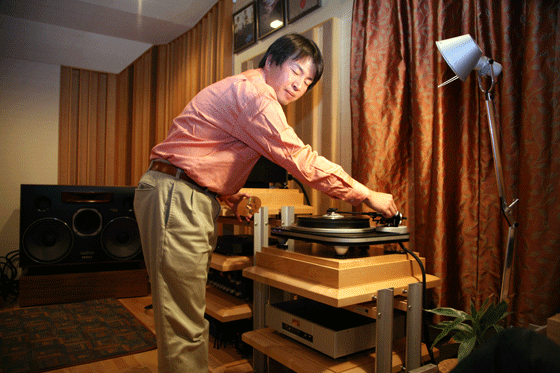
 …it was dynamic and rich on the other, literally speaking. That’s because of the Westlake Audio horn loudspeakers and the Nelson Pass famous single-ended solid state amps, the Aleph Zero. We listened to this system second and as soon as Terence Blanchard’s Levees started up, from his newest CD “A Tale of God’s Will (A requiem for Katrina),” the sound was reminiscent of home! The similarities that both systems (mine and here) are solid-state based driving horns offers a remarkably familiar sonic signature. Guilt by association isn’t necessarily a bad thing! Again, an utterly dynamic and rich presentation with real-life soundstage and image palpability.
…it was dynamic and rich on the other, literally speaking. That’s because of the Westlake Audio horn loudspeakers and the Nelson Pass famous single-ended solid state amps, the Aleph Zero. We listened to this system second and as soon as Terence Blanchard’s Levees started up, from his newest CD “A Tale of God’s Will (A requiem for Katrina),” the sound was reminiscent of home! The similarities that both systems (mine and here) are solid-state based driving horns offers a remarkably familiar sonic signature. Guilt by association isn’t necessarily a bad thing! Again, an utterly dynamic and rich presentation with real-life soundstage and image palpability.
One interesting thing about soundstaging that I always took for granted was the physical location of a loudspeaker…

(notice above photo), there’s little space between the walls and the Westlakes as well as their space from each other. Yet, they threw an image that was as wide as it was deep, making their physical location hard to point out if you closed your eyes. There’s a lot of psycho-pseudo claims when it comes to how easily we audiophiles are fooled by what we hear. In the case of listening to this system I would have to concur. With all the acoustic trappings, which includes the AR tweaks and isolation racks, and the insanely anal setup, I’ll wager Ishiguro could fool practically anyone as to the location of these loudspeakers, or perhaps the very walls themselves. Interestingly, when asked which system is preferred, Ishiguro stated he likes the Westlakes better on everything except classical. “That’s where the Avalons come in” says Ishiguro.
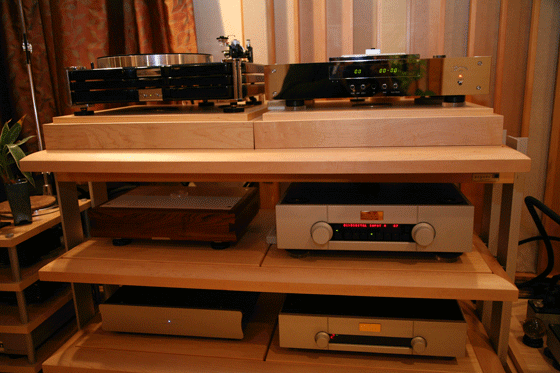
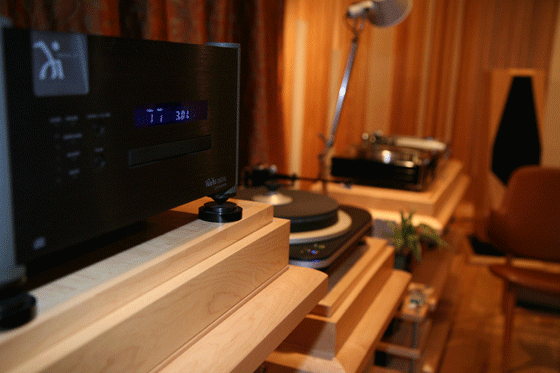
An impressive front end that featured some elite sources such as Goldmund and Burmeister on one end while Wadia and Levinson paired up on the other end with the Westlake Audio loudspeakers.
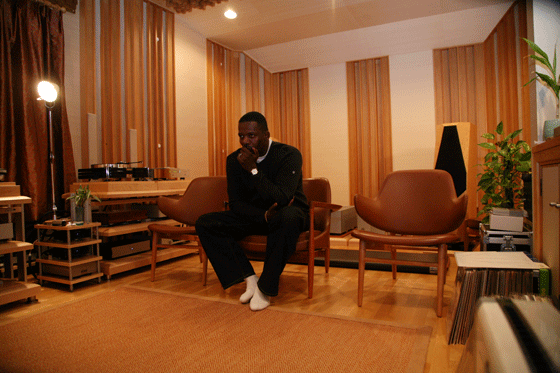
The longer I sat and listened the more respect and admiration I gained for Ken Ishiguro’s talents. I’m told there were three more systems located in his home. Unfortunately, I did not get the chance to listen because, honestly, I had my hands full trying to absorb just the two “back- to-back” systems here. I’ve very seldom met anyone as meticulous as Ken Ishiguro when it comes to setup and performance. When it comes to aesthetics I’ve never been in a listening room this elegant. Nope. The fact that this system featured most of Ishiguro’s products from his RTP-6 AC conditioners, Power Cords, Speaker Cables, Purity Quartz Insulators and Purity Silk Absorbers just to name but a few and sounded so utterly delightful probably wasn’t some mere coincidence.

What continues to have me scratching my wig however, is trying to figure how Ishiguro manages to summon such sonic excellence from two really impressive systems AND simultaneously take full responsibility for the ideas, concepts and designs behind all Acoustic Revive products! Sh… I have a hell of time trying to keep one system sonically up to par. Ishiguro jokingly referenced UFOs coming down at night to give him ideas. I didn’t find this too funny considering how serious I take the UFO phenomenon and how many products Ishiguro’s designed. Coincidence? I think NOT!

Album Art: Jazz heroes Thelonious Monk and John Coltrane graced Ishiguro’s entrance.


Wednesday morning proved uneventful considering how poorly I slept. As expected, jet-lag certainly got the best of me. While my watch read 7:00 AM, my body-clock told me it was still 5:00 PM Tuesday evening. That said, the world outside my hotel window was coming alive. Watching the morning sun rise above Isesaki’s modest city and its symbolic Akagi mountains proved quite a eye-opener for this New York City kid.
First stop today; we’re scheduled to visit three different manufacturers in Isesaki City who actually build many of the Acoustic Revive products. Among these include the RTP 2-4-6 AC conditioners, RGC-24 Ground Conditioner, RIO-5 Ion generator and lastly, the successful RR-77 Ultra-low Frequency Pulse Generator. Thus far, after the splendiferous evening I had in Ishiguro’s eye-popping and heart-stopping listening room, I viewed this trip as a success before actually getting really started. How sweet is that?
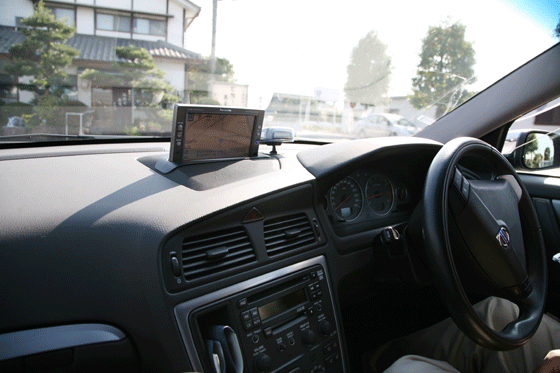
Its closer to 10:00 AM and Ken Ishiguro and his partner Aki Monobe, who also serves as my personal translator for nearly everyone I came into contact with, await my arrival in Ishiguro’s late model Volvo wagon. Notice that the steering wheel’s on the right hand side. Sitting in the front seat was very hard for me because I kept pressing the brake and gas peddle on nearly every stop and start.

The neat looking navigation system proved a neat topic since I’ve never seen one built on the top of a dash board. Especially since it didn’t retract, fold or disappear when you took the key out of the ignition. Monobe says it’s custom built and like most navigation systems here, we’ve found, you can only trust them but so much – no matter the location or language.
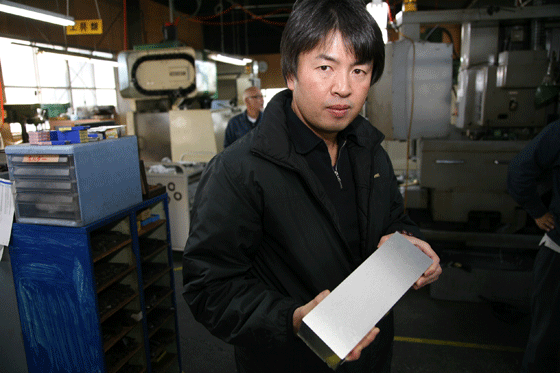

The manufacturer of the RTP 2-4-6 AC conditioners and RGC-24 Ground conditioner was our first stop.
The facility was unusually clean and well-kept as was each facility I visited this day. What stood out for me was seeing a solid piece of metal, in this case, Duralumin (Ishiguro is holding), and witnessing the many different machines it has to go through before it’s a finished and ready product. I’m told a single finished RTP AC conditioner takes seven days to manufacture.
Here’s a series of photos that capture some of the process….
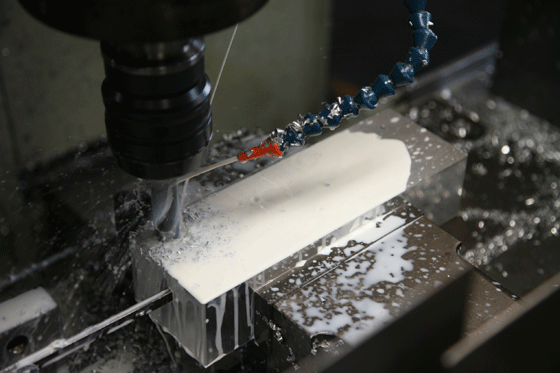
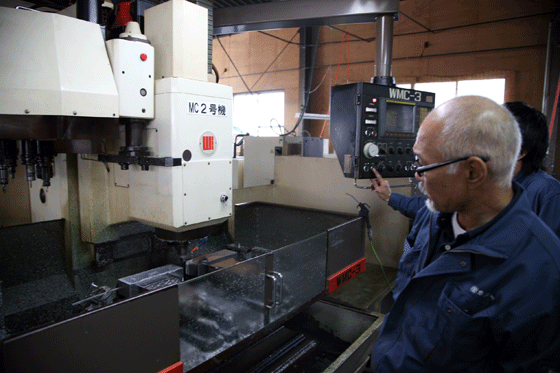

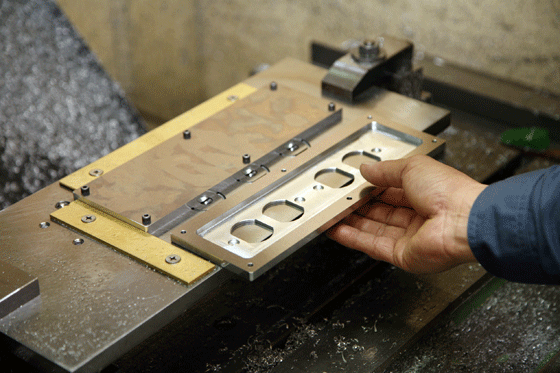




Notice the base of the RTP-6 uses a combination of Green Carborundum, Tourmaline and Quartz powders that form what Ishiguro calls “a mixed blend” of natural RFI/EMI absorption materials. The IEC connectors are specially sourced from Oyaide Elec.
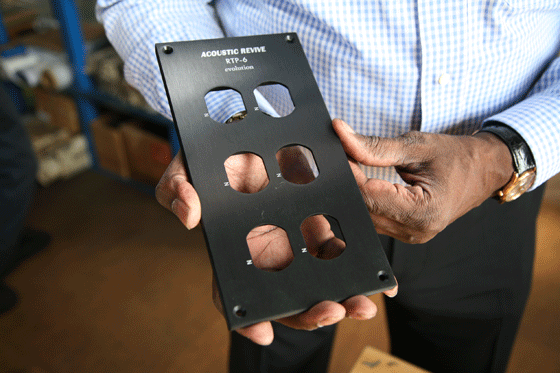
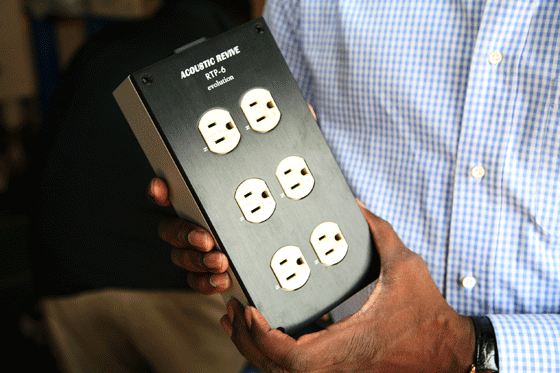

The same combination of Green Carborundum, Tourmaline and Quartz powder make up the AR RGC-24 Ground conditioner which primarily does the same job cancelling out EMI/RFI. Only the RGC-24 was designed to be used underneath front-end equipment such as CD players, DACs and preamps directly below their power supply.

I’m holding the very substantial base to the Acoustic Revive RSS-600 speaker stand, which is also manufactured alongside their RTP series AC conditioners and RGC-24s.
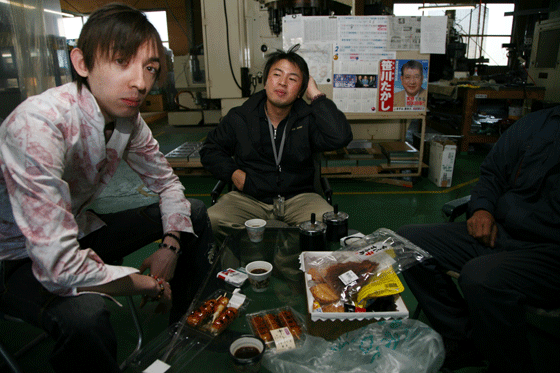
A short timeout with Japanese pastries was in order before parting to another Acoustic Revive facility.
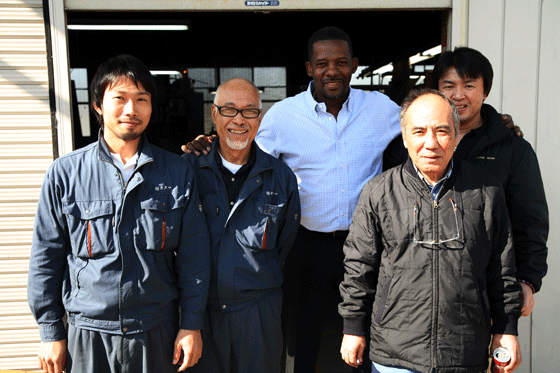
A farewell photo with the manufacturing side at Acoustic Revive Inc. THESE are the folks who meticulously build the products we’ve come to know and appreciate.

Acoustic Revive cables typically begin life using 6N Single-Core solid cabling. This cable then goes through a variety of processes that include a natural silk tubing that is said to decrease hardness which gives it an exceptionally smooth character.
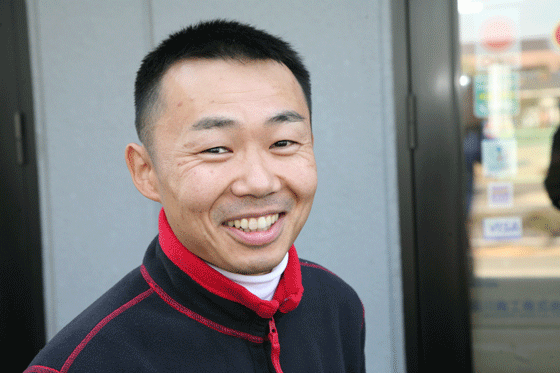
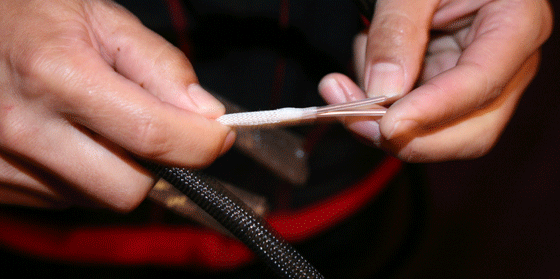
This silk tubing (above) is derived from a very fine grade of silk that is specifically manufactured for Acoustic Revive. The cables are hand built by cable craftsman Mr. Ubukata san (photo above.


Acoustic Revive silk tubing is made on these huge computerized sewing machines.

Raw silk tubing right off the sewing machine.


Believe it or not, silk tubing actually takes longer to manufacture than that sweater says AR guru, Ken Ishiguro. I personally evaluated both fabrics and can certainly agree on the AR tubing being a finer thread.

Here’s another trio of manufacturers responsible for the excellent sounding assortment of cables from Acoustic Revive.
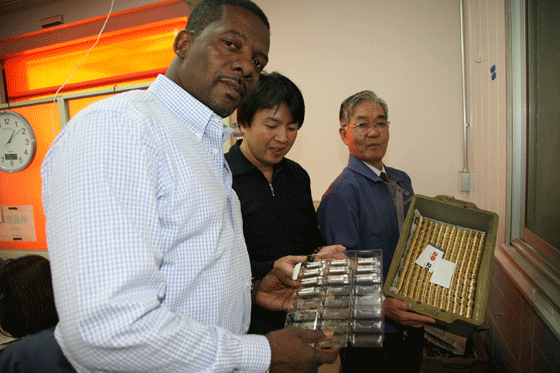
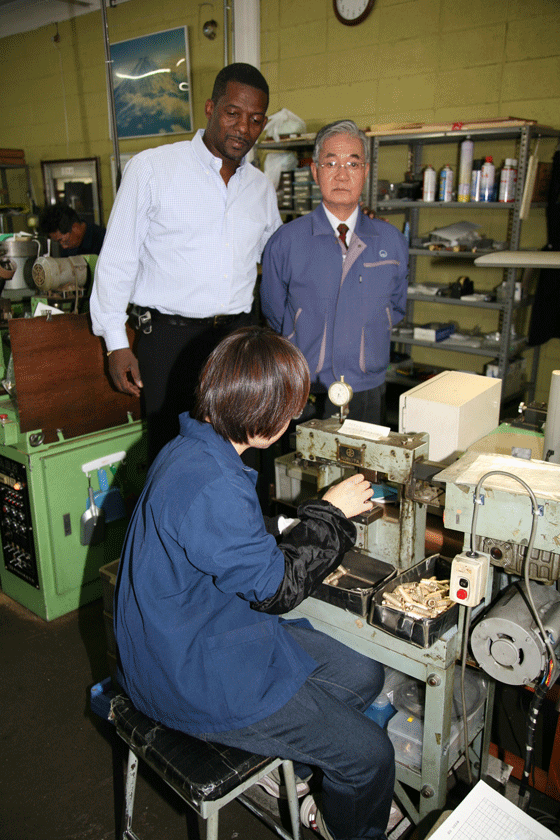
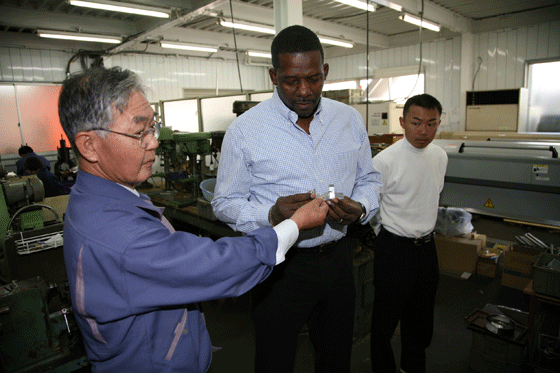
Our next trip was to visit Mr. Matsumoto-san (above left) of Matsukin Ltd., the well-known manufacturer of connectors who is one of the very few remaining manufacturers still operating in Japan. Most businesses have relocated to less expensive places in Hong Kong says Matsumoto.

Matsukin Ltd. has been making connectors in the same location for over 45 years. Connector types are wide and vary in many different styles for many different applications. I found it exciting to see for the first time how it’s actually done. Here’s a short photo gallery…
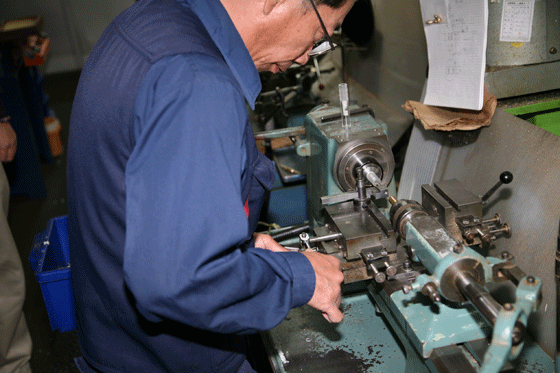


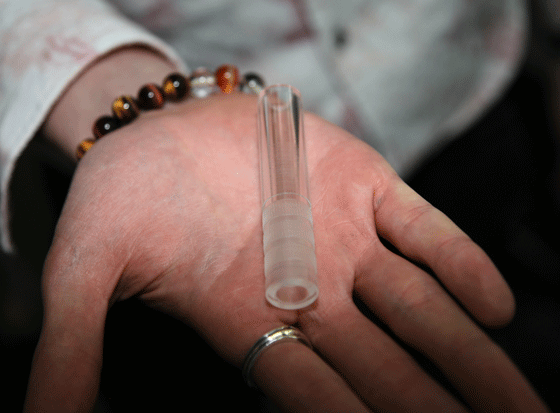



Here marks the last stop of my whirlwind tour of Acoustic Revive Facilities. These proud workers (photo above) are responsible for the manufacturing of AR’s Ultra-low frequency Pulse Generator (RR-77) and the Minus Ion Generator (RI05 II)

Here’s the internal motherboard to the AR RR-77.

The internals to the Minus Ion Generator (RI05 II). And once more a series of photos….





An assembly line of employees putting together the AR RI05 II.

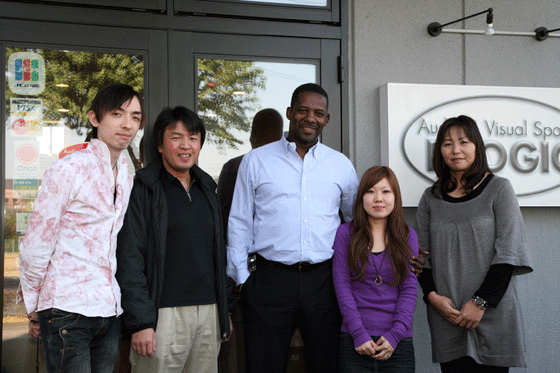
Where does Ken Ishiguro find the energy and time? I was shocked to find that, in addition to having five dedicated listening rooms in his home and nearly a half-dozen manufacturing facilities to keep and eye on, there’s also Audio & Video Space PROGIC, a hi-end emporium owned and operated by Acoustic Revive staff (above).
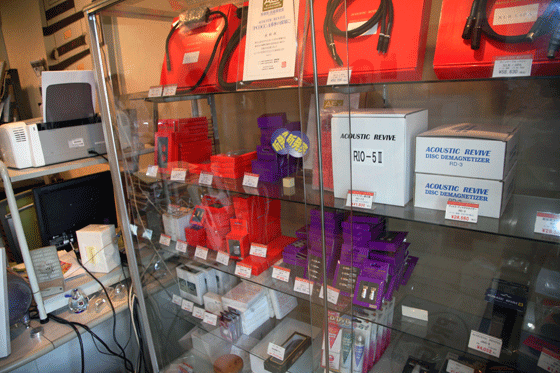
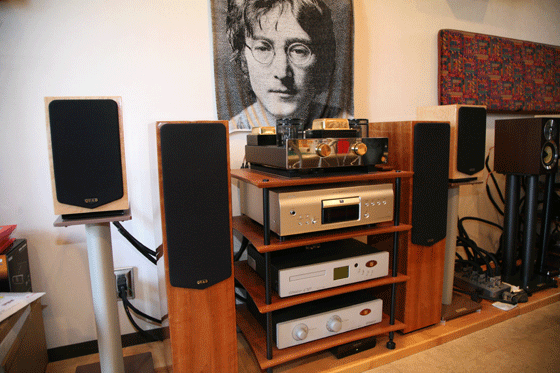
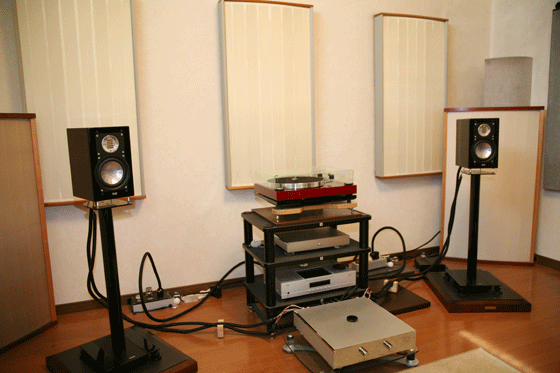


It’s easy to see, after spending as much time as I did, how Ishiguro gets the results he does from his products. There’s so much to experiment with and on such a wide range of systems – from the affordable to the insanely expensive – that I personally am amazed by how easy he makes happen. The one thing I came away with from this trip that I can openly and honestly share with you is this: Acoustic Revive is as serious about their products as they are about their sound. I think that’s because Ishiguro is an audiophile first and foremost.
Lastly, Ken Ishiguro must be an audio savant of some sort. How he manages day to day to do what he does, not to mention all the designing and the energy he puts out, left me flat out exhausted just following him around. I remember coming away feeling this same way on my last trip to Osaka, Japan back in 2000 as a guest of Zanden Audio. Maybe it’s the culture and the Japanese way of getting things done that leave us Americans envious (thank you Honda, Toyota and Nissan). All I know is, I’ve never seen this much dedication from such a large group of people for the sole purpose of music appreciation. I’m just grateful knowing companies like Acoustic Revive invent products that really work at enhancing our musical appreciation and, more importantly, in an affordable fashion.
Sayonara.

Stereo Times Masthead
Publisher/Founder
Clement Perry
Editor
Dave Thomas
Senior Editors
Frank Alles, Mike Girardi, Russell Lichter, Terry London, Moreno Mitchell, Paul Szabady, Bill Wells, Mike Wright, and Stephen Yan,
Current Contributors
David Abramson, Tim Barrall, Dave Allison, Ron Cook, Lewis Dardick, John Hoffman, Dan Secula, Don Shaulis, Greg Simmons, Eric Teh, Greg Voth, Richard Willie, Ed Van Winkle, Rob Dockery, Richard Doran, and Daveed Turek
Site Management Clement Perry
Ad Designer: Martin Perry





Be the first to comment on: A Day in the Life of Acoustic Revive’s Ken Ishiguro